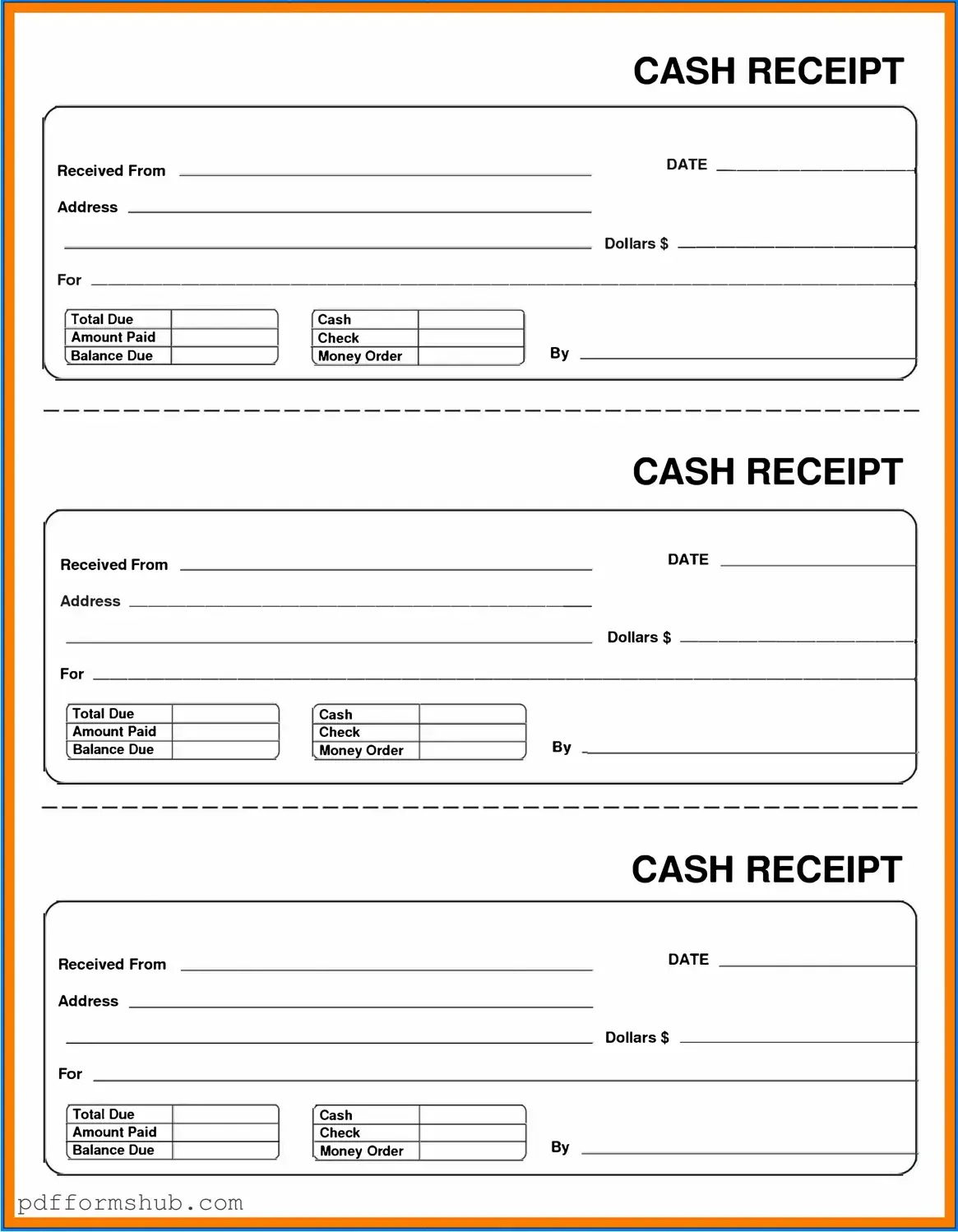The Cash Receipt form is an essential tool for businesses and organizations that handle cash transactions. It serves as a formal record of cash received, providing a clear and concise way to document the transaction details. Typically, the form includes vital information such as the date of the transaction, the amount received, the source of the funds, and the purpose of the payment. Additionally, it often contains spaces for signatures from both the payer and the recipient, ensuring accountability and transparency in financial dealings. By maintaining accurate records through the Cash Receipt form, businesses can track income, manage cash flow, and prepare for audits or financial reviews. This form not only simplifies the process of documenting cash transactions but also helps in maintaining organized financial records, which is crucial for effective business management.
